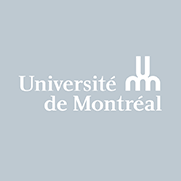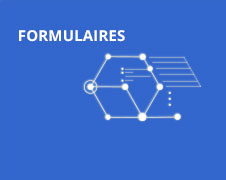
Christophe Faure
- Professeur titulaire
-
Faculté de médecine - Département de pédiatrie
Profile
Research expertise
During embryonic development, esophagus and trachea develop from the anterior foregut (AF) tube. Disruption in the separation into two distinct tubes results in foregut malformations such as esophageal atresia and trachea-esophageal fistula (EA/TEF) affecting 1 in 3,500 births. The only treatment available for children born with these malformations involves surgically connecting the deformed esophagus with the stomach with life-long complications.
The mechanisms underlying the embryonic and fetal development of EA/TEF are poorly understood. Much work has focused on understanding the differentiation of the respiratory and digestive system from the AF tube but many questions about the process of compartmentalization remain unanswered. Most of our knowledge on foregut bifurcation, and subsequent esophagus development is based on genetic mouse models which revealed key genes, molecular pathways and signaling molecules that regulate foregut separation andcontinue to play key roles in esophagus development and homeostasis.
Human pluripotent stem cells (hPSCs) provide an efficient system to model and understand human organ development based on mimicking embryonic developmental stages to generate cell and tissue types originating from all 3 germ layers. Our Lab focuses on generation of mature esophageal and respiratory epithelium using induced pluripotent stem cells to better understand the developmental pathways involved in the normal development of the esophagus and trachea.
Our ultimate goal is to use iPSC-derived esophageal, endothelial and mesenchymal progenitors to generate a 3D patient-derived neo-esophagus, to be used as an esophageal replacement in children with long-gap EA without the need of immunosuppression.
Affiliations and responsabilities
Research affiliations
Research units
Membre
Affiliated institutions
- Centre hospitalier universitaire Sainte-Justine (CHU Sainte-Justine)
Teaching and supervision
Recruitment in research
Nous recrutons Étudiants de maitrise et PhD (motivés!) dans notre laboratoire au CHU Sainte Justine dès que possible
Merci de m'envoyer vos CV à. Je suis disponible à tout moment pour discuter.
Student supervision
Theses and dissertation supervision (Papyrus Institutional Repository)
Prématurité et désordres de la connexion intestin-cerveau : une étude cas-témoins : prévalence et facteurs de risque des désordres de la connexion intestin-cerveau dans une cohorte d’adultes nés prématurés : une étude cas-témoins
Cycle : Master's
Grade : M. Sc.
Induced pluripotent stem cells as modeling tools to understand esophagus development and diseases
Cycle : Doctoral
Grade : Ph. D.
Le rôle de l’angiographie au vert d’indocyanine en chirurgie pédiatrique
Cycle : Master's
Grade : M. Sc.
L’évolution à long terme, le fonctionnement de l’intestin et la qualité de vie des patients affectés par la maladie de Hirschsprung : étude prospective cas-témoins
Cycle : Master's
Grade : M. Sc.
La perturbation du locus Nr2f1-K12 entraine une différenciation gliale précoce dans un nouveau modèle murin de mégacôlon aganglionnaire
Cycle : Master's
Grade : M. Sc.
La plasticité du système nerveux entérique au cours de l'inflammation : réexpression de PSA-NCAM dans un modèle de colite expérimentale chez le rat adulte
Cycle : Master's
Grade : M. Sc.
Expression de PSA-NCAM dans le système nerveux entérique chez le rat au cours du développement et au cours de la réponse inflammatoire
Cycle : Master's
Grade : M. Sc.
Projects
Research projects
Understanding Esophageal Atresia using Induced Pluripotent Stem Cells
Modeling Barrett's esophagus using induced pluripotent stem cells from esophageal atresia patients // Modélisation de l'oesophage de Barrett à l'aide de cellules souches pluripotentes induites provenant de patients atteints d'atrésie de l'oesophage.
Understanding anterior foregut compartmentalization into the esophagus and trachea using induced pluripotent stem cells in a microfluidic device.
Understanding anterior foregut compartmentalization into the esophagus and trachea using induced pluripotent stem cells in a microfluidic device.
Trajectoires des malformations digestives.
Réseau de thérapie cellulaire, tissulaire et génique du Québec - ThéCell / Développement d'un oesophage artificiel à l'aide de cellules souches induites de patients iPS
Développement normal et pathologique de l'œsophage à partir de cellules iPSC
Description
During embryonic development, esophagus and trachea develop from the anterior foregut (AF) tube. Disruption in the separation into two distinct tubes results in foregut malformations such as esophageal atresia and trachea-esophageal fistula (EA/TEF) affecting 1 in 3,500 births. The only treatment available for children born with these malformations involves surgically connecting the deformed esophagus with the stomach with life-long complications.
The mechanisms underlying the embryonic and fetal development of EA/TEF are poorly understood. Much work has focused on understanding the differentiation of the respiratory and digestive system from the AF tube but many questions about the process of compartmentalization remain unanswered. Most of our knowledge on foregut bifurcation, and subsequent esophagus development is based on genetic mouse models which revealed key genes, molecular pathways and signaling molecules that regulate foregut separation andcontinue to play key roles in esophagus development and homeostasis.
Human pluripotent stem cells (hPSCs) provide an efficient system to model and understand human organ development based on mimicking embryonic developmental stages to generate cell and tissue types originating from all 3 germ layers. Our Lab focuses on generation of mature esophageal and respiratory epithelium using induced pluripotent stem cells to better understand the developmental pathways involved in the normal development of the esophagus and trachea.
Our ultimate goal is to use iPSC-derived esophageal, endothelial and mesenchymal progenitors to generate a 3D patient-derived neo-esophagus, to be used as an esophageal replacement in children with long-gap EA without the need of immunosuppression
Outreach
Publications and presentations
Publications
Il a publié au cours des 5 dernières années, 27 articles dans des revues avec comité de pairs (sur un total de 95 depuis le début de sa carrière), ainsi que 20 chapitres de livre. Il est éditeur principal du livre Pediatric Neurogastroenterology. Nous vous détaillons ci-dessous cinq de ses publications les plus récentes :
- Halb C, Pomerleau M, Faure C. Multichannel Intraesophageal Impedance Pattern of Children with Aerophagia. Neurogastroenterol Motil 2014
- Vandenplas Y, Cruchet S, Faure C, Lee HC, Di Lorenzo C, Staiano A, Xu Chundi, Aw MM, Gutiérrez-Castrellón P, Asery A, Spolidoro J, Heine RG, Miqdady M , Arancibia ME, Alarcón P. A Review of Potential Clinical Applications of Partially Hydrolyzed Formulas in Young Children. Acta Paediatr 2014
- Chapuy L, Pomerleau M, Perreault P, Faure C. Mucosal bridge as a cause of dysphagia after surgery for esophageal atresia. Can J Gastroenterol 2014
- Lemoine C,Aspirot A, Morris M, Faure C. Esophageal dysmotility is present before surgery in isolated tracheoesophageal fistula: evidence for a primary motility disorder. J Pediatr Gastroenterol Nutr 2015
- Berthet S, Tenisch E, Miron Mc, Alami N, Aspirot A, Faure C. Vascular Anomalies Associated With Esophageal Atresia and Tracheoesophageal Fistula. J Pediatr 2015
Disciplines
- Pediatrics
- Gastroenterology
- Molecular Medicine
- Biomedical Sciences
Areas of expertise
- Stem Cells and Organogenesis
- Congenital Anomalies
- Biotechnology
- Intestinal Malabsorption and Cholestatic Syndromes
- Gastrointestinal Pathologies
Aide en ligne pour votre profil | Nous joindre
Le Répertoire des professeurs est propulsé par les données du ![]() SADVR et est un projet du CENR.
SADVR et est un projet du CENR.


